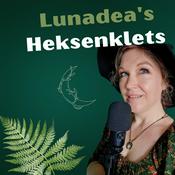2185 afleveringen

Zevahim 103: Sacrificial Hides
26-12-2025 | 20 Min.
Two mishnayot: Mishnah 1 - When the burnt offering is disqualified, the kohanim won't get the hide of the offering, depending on when the disqualification took place, and why it's been disqualified (for example, not brought in the name of the right offering - which would not fulfill the person's obligation in bringing that offering, but the kohanim would get the hide). The Gemara focuses on what it means that the offering belongs to a person, but not hekdesh (and not that of a convert). Plus, the limud/learning that teaches that the kohanim get the hides of kodshei kodshim, and the hides of the kodshei kalim go to the owners who bring the offerings. Mishnah 2 - What happens to the hides when they've already been flayed from the offering, before disqualification? Rabbi Hanina, deputy high priest, said he never saw the hides going out to be burnt - which leads Rabbi Akiva to draw conclusions that the sages then rebut.

Zevahim 102: Was Moses King?
26-12-2025 | 17 Min.
On kings and whether Moses was one - with the argument that he was not king, and also that he was, but without being the progenitor of a dynasty of kingship. Which leads to a discussion of monarchic dynasties - and the lack thereof, including King Saul. Also, how kohanim who are unfit for the service of a given day do not eat from that day's offerings... except that the shares of meat given the kohanim with blemishes has already been established! Plus, the logic of the order of the statements on these points.

Zevahim 101: Moshe, Aharon, and Inaugurating the Mishkan
24-12-2025 | 25 Min.
The Gemara addresses the acute mourning of Aharon (Aaron) in the Torah when Nadav and Avihu die on the altar, when they bring the "strange fire" - and, among other offerings, a sin-offering was brought too - and Moshe (Moses) rebukes Aharon for burning the sin-offering among them. How much does Aharon's conduct inform the practices-to-be of kohanim in a state of acute mourning in the generations to come? Also, was Moshe himself a kohen, given his partaking of the offerings on this day of establishing the Mishkan? Doesn't the very fact that he was able to eat from the offerings mean he must have been a kohen? It's not that simple

Zevahim 100: When a Kohen Mourns
23-12-2025 | 19 Min.
Rabbi Shimon's position of the acute mourner and the Pesach offering - and ways of resolving the apparent contradictions in his respective positions. Specifically, must the kohen become impure for the death of a close relative or does he have permission to do so? A clear dispute. But the need for a "met mitzvah" - perhaps that is not disputed, and the kohen must become impure for the sake of that need to bury. Also, a deeper dive into the view that says the acutely mourning kohen must partake of the Pesach offering.

Zevahim 99: Kohanim Are People Too
22-12-2025 | 16 Min.
On kohanim who weren't eligible to eat from the sacrificial meats - beginning with a t'vul yom, one who has immersed in the mikveh for purity, but the sun has not yet set, so he isn't pure yet, for the purposes of eating from the offerings. [What's What: Mishmarot] Plus, the question of a "ba'al mum" - the degree to which even the "blemished" kohen is still a kohen in many important and privileged ways. Also, a kohen who is in acute mourning - and therefore cannot serve in the Temple at that time, but still may (or may not?) partake of the foods that were eaten by the kohanim. For example, sacrificial meats. And the Pesach offering in contrast to them... He still has to be purified by the time of eating, but there are stringencies in place with regard to these foods.
Meer Religie en spiritualiteit podcasts
Trending Religie en spiritualiteit -podcasts
Over Talking Talmud
Luister naar Talking Talmud, Adieu God en vele andere podcasts van over de hele wereld met de radio.net-app

Ontvang de gratis radio.net app
- Zenders en podcasts om te bookmarken
- Streamen via Wi-Fi of Bluetooth
- Ondersteunt Carplay & Android Auto
- Veel andere app-functies
Ontvang de gratis radio.net app
- Zenders en podcasts om te bookmarken
- Streamen via Wi-Fi of Bluetooth
- Ondersteunt Carplay & Android Auto
- Veel andere app-functies


Talking Talmud
download de app,
luisteren.


































